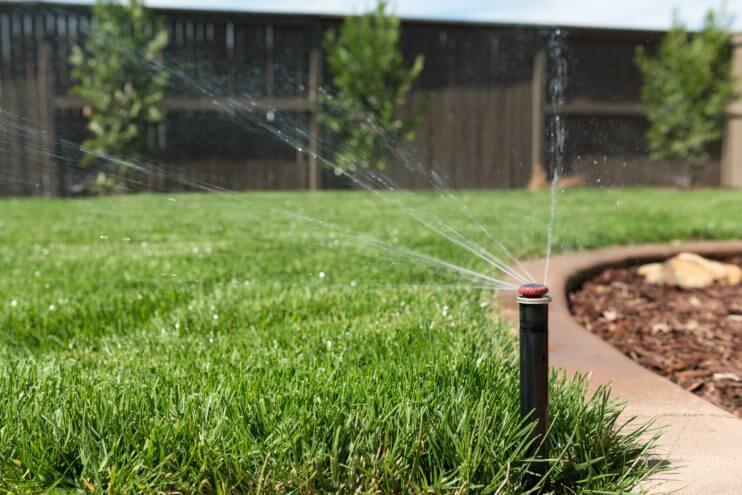How Much Water Does My Lawn Need?

It’s an age old question about your yard. Using too much water is a waste, but not enough puts your landscaping at risk. With this guide, you will know how to adjust your watering to the proper amount.
1. Test Watering Cycle
The first step to take is to turn on the watering cycle and see how it runs. If you cannot watch it on its normal schedule, try to turn it on at a time that works better for you. Avoid the hottest part of the day or a very hot day, because some of the water may evaporate before you get a chance to evaluate it. Place bowls or cups at various points in your yard, and let the sprinkler run for 15 or 20 minutes. For drip irrigation systems, lift up the tubes if you can do so safely and place them on a tray with a lip on the side, to collect the output.
2. Observe Sprinkler Heads
One reason to watch the watering cycle is that sprinkler heads do not always do what you expect them to do. Sprinkler heads are pretty easy to break, especially if you have a head near the sidewalk that does not drop back down easily when the watering is done. Differing brands of sprinkler heads will water uniquely, which means that you might be watering the sidewalk or driveway if you buy a different brand and do not invest the time to watch it. Make sure that all sprinkler heads are in good condition, clean and pointed in the appropriate direction. Ask your Sacramento plumber to perform sprinkler maintenance or repair as needed.
3. Measure Quantities
Once the watering cycle is complete, you should collect the bowls and cups to determine how much water came out. Be sure to record where each collection came from, so you can see if a part of your yard is not getting enough water or getting too much. If the bowl or cup contains a quarter of an inch of water, that means that the same space of soil will be getting a quarter of inch of water every time you run the sprinkling system. Your best bet is to provide about an inch of water per week, in however many sessions is appropriate for your soil.
4. Adjust Based on Soil and Season
The amount of water you need will also depend on the season and the soil under your lawn. Sandy soil does not hold onto liquid as well, so it should be watered more frequently for a shorter duration. Clay-like soil absorbs water well, but can get waterlogged. You should water it less frequently, and keep an eye for signs of overwatering such as the growth of fungus. Periodically check on your watering throughout the season, to make sure that you are still watering just the greenery, and that all systems are in good order.
Avoiding giving your lawn too much water is a good idea for any place that routinely goes through drought, like Sacramento. To learn more about saving water while keeping your lawn green, contact us at Ace Plumbing.



